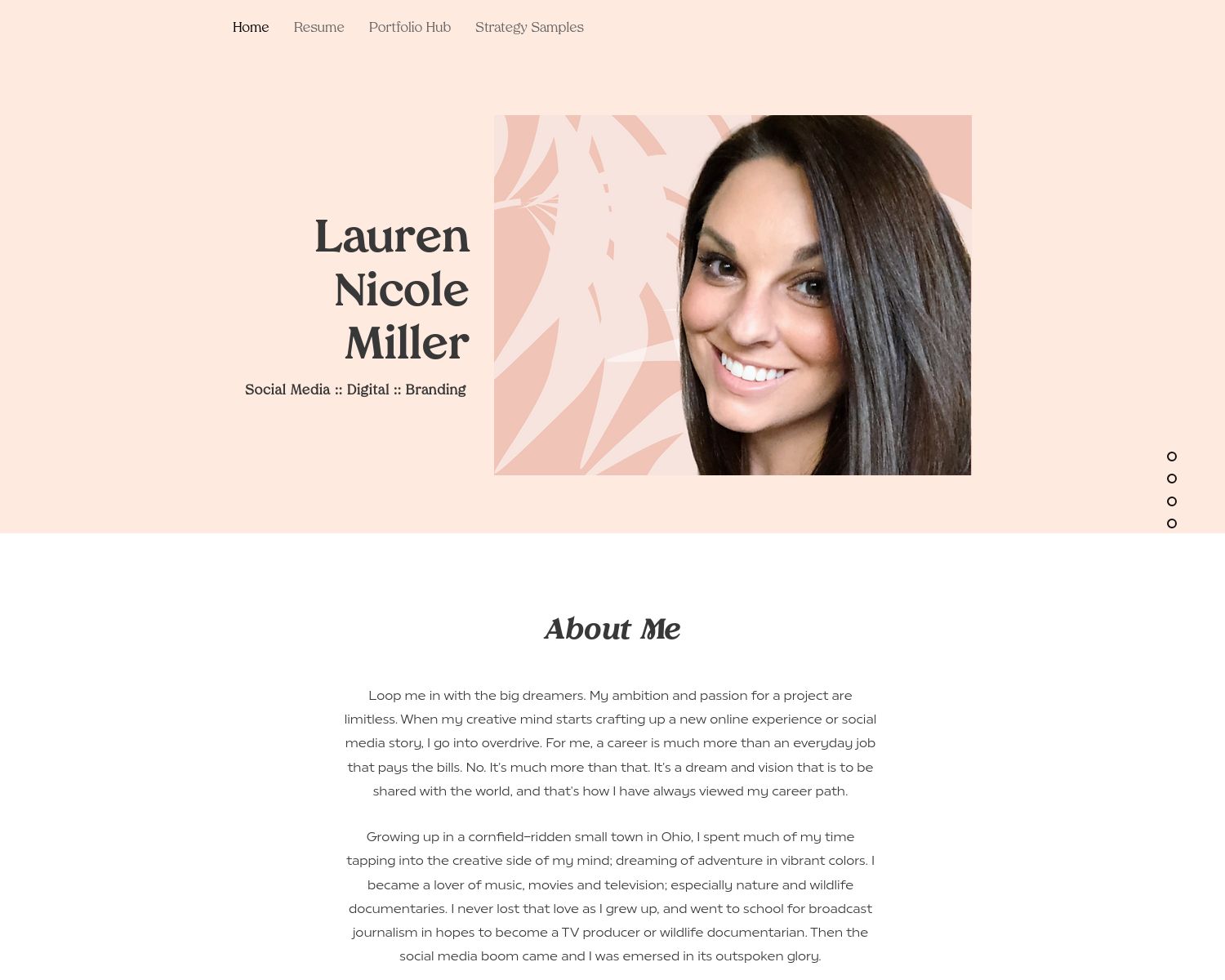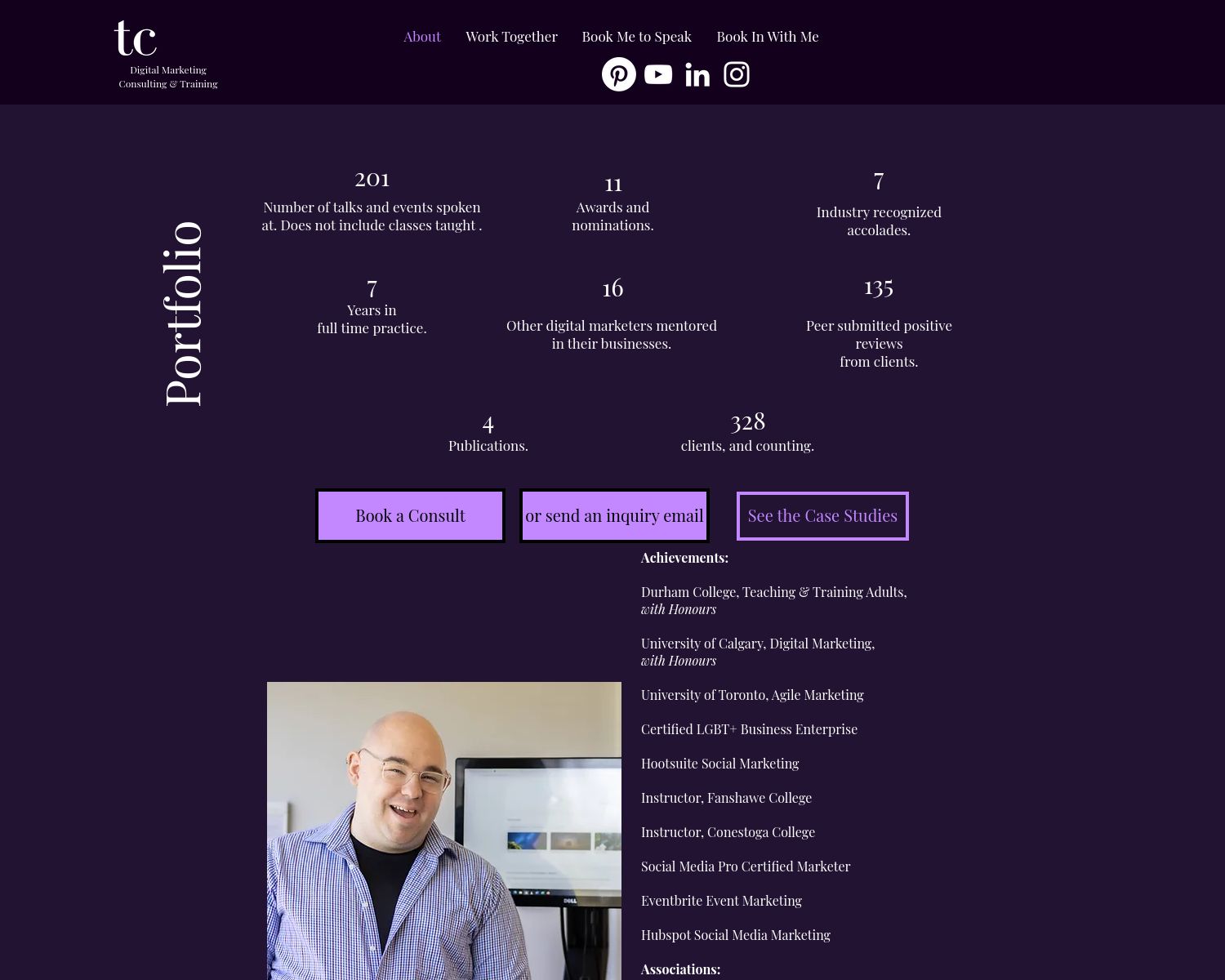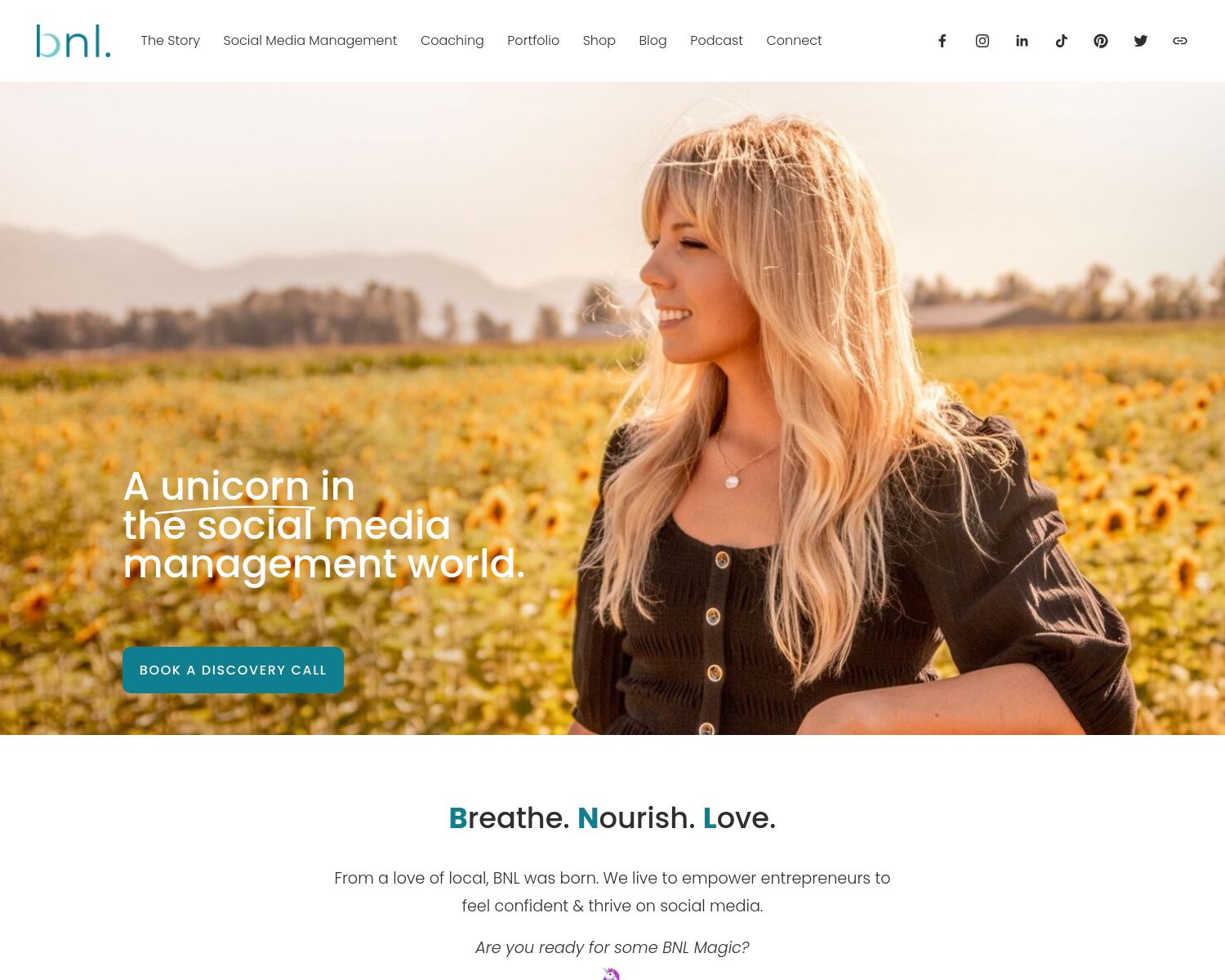
How To Make A Social Media Manager Portfolio That Stands Out In 2024 (With Examples)

Sam Hindman
Published onLet's be real: In 2024, a standard resume just doesn't cut it anymore. If you're a social media manager looking to catch the eye of potential clients or employers, your portfolio is where you should focus your energy. But putting together a portfolio that truly stands out can feel overwhelming. How do you decide what work to showcase? What's the best format to use? Don't stress---we've got the answers.
In this guide, we'll explain exactly how to create a social media manager portfolio that impresses and elevates your career. Building a portfolio doesn't have to be a chore; when done right, it can be an exciting way to showcase your skills and creativity.
Why Do Social Media Managers Need A Portfolio?
As you probably know quite well, social capital drives not only our interpersonal decisions but also our business decisions. When a company or brand puts you in charge of their social media accounts, the power to make or break their business is in your hands (no pressure!).
This is all to say that placing this responsibility in someone else's hands is a tough choice for business owners. They aren't going to grant the position to the first socially savvy Gen Zer who applies; they're going to carefully sift through a handful of options before giving anyone the job.
Your social media portfolio is your opportunity to show those individuals that you're the one for the job. Whether through your skillset, experience, or analytics, it's up to you to use your portfolio to win them over. Word of mouth can, unfortunately, only get you so far.
Ways To Showcase Your Social Media Portfolio
Unlike other industries, like journalism or architecture, a solid social media portfolio can take several forms. It all depends on your social media services, the potential clients you'd like to attract, and your general creative process.
Let's go through the four most common types of social media management portfolios to determine which one is the best for you.
Slide Deck
If you like to keep things concise and visually engaging, a slide deck might be the ideal format for your social media portfolio. Slide decks allow you to showcase your biggest achievements in a clear and focused way, making it easy for potential clients or employers to quickly grasp the value you bring. They're particularly effective in social media marketing, where visuals play a huge role.
A well-designed slide deck can be easily shared via email or during meetings and can be customized for different audiences. The nature of slide decks also encourages brevity, so you can focus on highlighting your key skills and most impressive projects without overwhelming your audience.
Website
A dedicated portfolio website is a versatile and powerful option for showcasing your professional work. Whether you're a freelance social media manager or part of a social media agency, a website serves as a central hub where you can present your skills, experience, and case studies in a detailed and professional manner.
A well-crafted website boosts your credibility and allows you to go in-depth with your content (win-win), offering comprehensive case studies, client testimonials, and a full list of services. Optimizing your website for search engines can also increase your visibility, attracting organic traffic from potential clients searching for social media professionals in your niche!
Choosing The Right Website Builder
The goal is to find a platform that offers enough customization options without being overly complicated. After all, you're a marketer, not a tech expert.
For instance, platforms like Journo Portfolio offer a mix of drag-and-drop features with the option for HTML coding. This allows you to tailor your site to be as simple or as personalized as you want.
It's wise to take some time to explore different hosting options before deciding which one best suits your portfolio. A helpful approach is to look at social media portfolio examples from others who use the same platform to see if it aligns with your needs!
Social Media Page
There are certainly some social media managers who can get away with using their personal social media accounts as their portfolio. But this only works if you have an impressive enough following in tandem with visible testimonials, proof of experience, etc. You also have to consider niche when working in the content creation field. For instance, an e-commerce start-up isn't going to want you to run their social media accounts just because your fashion Instagram account has 100K.
What Goes Into A Social Media Manager Portfolio?
Once you've decided on the format, the next step is determining what to include in your portfolio. The key here is to strike a balance between showcasing your skills and making sure potential clients get a clear understanding of what you bring to the table. Let's break down the essential components that will help your portfolio stand out.
Your Story/The Story of Your Brand
People connect with stories, and your portfolio should start by telling yours. This isn't just about listing your qualifications---it's about sharing the journey that led you to where you are now. Think about some of the following questions when crafting your story:
How did you get into social media management?
What personal projects are you pursuing?
What challenges have you overcome?
What are your core values?
By including a brief bio or brand story, you give potential clients a reason to connect with you on a personal level, which can make all the difference when they're deciding whether to hire you.
Client Testimonials/Social Proof
In a world where social proof is everything, client testimonials can be your best friend. They provide third-party validation that you know what you're doing and that you've delivered results in the past. Make sure to feature quotes from satisfied clients, and if possible, include video testimonials or links to full reviews.
These testimonials should highlight not just that you did a good job, but how your work specifically benefited the client---whether through increased engagement, more followers, or better ROI.
Case Studies
Case studies are where you can really dive into the details of your work and show how you've delivered results. Pick a few of your best projects and break them down step by step. A strong case study should answer the following questions: What was the client's problem, how did you solve that problem, and what were the results?
Use visuals like charts, screenshots, and before-and-after comparisons to make your case studies as compelling as possible. This will demonstrate your expertise and give potential clients a taste of what it's like to work with you.
A Service List
This might seem obvious, but you'd be surprised how many portfolios forget to list the services offered clearly. Think of this as your menu---it should be easy to read and give potential clients a clear idea of what you can do for them. Whether it's content creation, strategy development, paid ads management, or something else entirely, make sure each service is described briefly but effectively. This also helps clients quickly determine whether you offer what they're looking for.
An Outline of Your Process
Clients want to know what they're getting into when they hire you, so include an outline of your process. This can be as simple or detailed as you like, but it should give a clear overview of how you work from start to finish.
Do you start with a discovery call? How do you develop a strategy? What tools do you use? How often do you report back to the client? By answering these questions upfront, you set clear expectations and show that you're organized and professional.
Easily-Found Contact Details
You wouldn't believe how many portfolios bury their contact information---or worse, leave it out entirely. Ensure your contact details are easy to find and include multiple ways for potential clients to reach you.
This could be an email address, phone number, and links to your LinkedIn or other professional social media accounts. The easier it is for someone to get in touch with you, the more likely they are to do so.
5 Social Media Portfolio Examples
It's fair to say that a medium as visual as social media attracts visual learners! Below, we'll go over five very different (but all well-created) social media portfolio examples to give you an idea of how you'd like yours to look.
August Media

August Media's portfolio is a textbook example of how a social media agency can present its work in a clean, professional, and highly effective manner. Their portfolio site is designed with simplicity in mind, allowing the content to shine without unnecessary distractions.
Each section of the portfolio is meticulously crafted to showcase successful social media campaigns, with a strong focus on case studies that outline the challenges faced, strategies implemented, and the results achieved.
Lauren Nicole Miller

Miller's portfolio perfectly balances personal branding and professional expertise, making it an excellent model for freelance social media managers and digital marketing consultants. You may notice that her "strategy samples" are password-protected. This is because some clients establish a non-disclosure agreement with the social media manager working with them to maintain privacy.
Take this into account when using samples in your own portfolio! You may need to ask permission from previous clients before including them on your portfolio site.
Julia Babicheva
Babicheva's portfolio is an excellent example of how a slide deck can be a viable option for strong social media portfolios. She has one short slide describing herself and her mission and then dives headfirst into her experience, stats, and client testimonials. When choosing to use a PDF portfolio, it's important to cut out the fluff and have something concise and full of value.
Tim Campbell

Numbers are your best friend when advertising your social media marketing skills, and Campbell is clearly a master of this. His home portfolio page begins with several valuable statistics that give an immediate impression of authority and expertise.
He also uses compelling case studies to illustrate his challenges and the innovative solutions he has implemented, providing a step-by-step guide to his process. This level of detail highlights his technical skills and gives potential clients a clear understanding of how he approaches social media management projects.
BNL Media Consulting

Speaking of strong personal branding, BNL agency is able to immediate establish their brand as "social media unicorns," a compelling magic-themed voice that travels throughout the contents of the website. The portfolio site is visually striking, with a modern design that immediately captures the attention of potential clients and hiring managers.
However, it's not just about looks---BNL excels at providing in-depth explanations of its process, giving visitors a clear understanding of how it approaches social media campaigns from start to finish.
What Do You Do Once Your Portfolio Site Is Finished?
So, you've put in the work, and your portfolio is looking good---what now? Finishing your portfolio is (unfortunately) just the beginning. Applying to social media marketing jobs is a game of numbers. Be prepared to do some high-volume networking before getting anywhere.
Here's what you need to do next to make sure that your portfolio gets you in front of the right people:
Share and Promote: Don't just sit back and wait for clients to find you. Share your portfolio on social media, include it in your email signature, and mention it during networking events. The more eyes on it, the better.
Update Regularly: Your portfolio should be a living document that evolves with your career. Make sure to update it with new case studies, testimonials, and any additional services you offer.
Seek Feedback: Don't be afraid to ask colleagues, mentors, or even clients for input. Constructive criticism can help you refine your portfolio and make it even stronger.
Leverage Analytics: If your portfolio is hosted on a website, use analytics tools to track visitor behavior. This can help you understand what parts of your portfolio are working and where you might need to make adjustments.
Create Your Social Media Portfolio Today!
Now you know exactly what it takes to build social media portfolios that impress others and (arguably more importantly) advance you further in your career. While it's a highly competitive industry, taking the steps to build a strong portfolio will put you miles ahead of the majority of your competition. It's up to you! Take this knowledge and apply it to your own portfolio website today!
Journo Portfolio prides itself on balancing ease of use and potential for customization, making it one of the best portfolio builders online. It's in the name, after all! Check out our complete list of features, and get started with your free account today.




